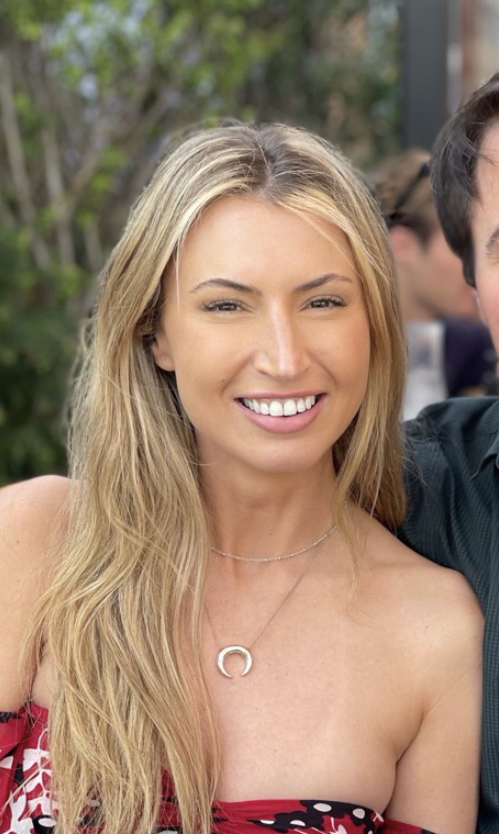

BY TAYLOR HARRIS
PHOTOGRAPHER MENELIK PURYEAR
STYLING DAVID THIELEBEULE
HAIR TSUKI
MAKEUP WALTER OBAL
The shows will go on.
It’s the decree of the IMG Alliance, an initiative banding together 11 American designers in a collective pledge to show at New York Fashion Week for the next three seasons. “We’re rebuilding the bedrock of New York Fashion Week,” Noah Kozlowski, director of designer relations for IMG, tells Grazia USA. “In partnering with these designers through 2022, we’re safely demonstrating the resilience and artistry of American fashion on a global stage.”
In exchange for their commitment, each of the participating designers will receive funding from IMG to help finance their shows. “The designers who are showing here are, for the most part, independent and don’t have the scale and level of support that some of their counterparts in Europe have,” Kozlowski continued. “So, this initiative came about very organically, out of countless conversations we’ve been having with designers over the past several months.”
Pre-pandemic, there were countless conversations of a different nature: regarding the relevance and ROI of the shows, the breakneck pace of the fashion calendar, the implications—environmental and otherwise—of a six-collections-per-year output, the sheer volume of stuff created in the name of newness. Then, the pandemic hit and an industry often pushed into hyperspeed was stopped dead in its tracks.
Nearly two years later, we’re picking up speed but how it resumes in earnest remains to be seen. For insight, we spoke with those who have their eyes on the horizon: six designers taking part in fashion’s great Reconstruction.

Grazia Gazette: How has this imposed break affected your creative process over the last two years?
JOSEPH: I wanted to approach it as a break from how we used to do things and think very intentionally and purposefully about the production and the experience and the emotion we were trying to convey. So a lot of the production elements are much more thoughtful—even for music, where we’re working with an original composer as opposed to kind of using existing music, and the invitation, we worked with an artist to create something meaningful. So it’s taken more time and we started a lot earlier than we normally would.
GG: Has that slower, more intentional approach translated to your design process?
JOSEPH: Definitely. I think the hard thing about being a designer is that you need to be creative, but on a very strict timeline. There’s not a lot of professions with those parameters, where you have to be incredibly creative in very little time, and have to deliver by a certain date and then you’re reviewed on it and you gauge the financial success of it and then start it all over again.
I think because we’d never had a break, we never really took the time to look back or take a moment to pause and think about the trajectory and where we want to go. So taking this time to think about our goals has really affected the design process—what I design and how I design and how I think about the collection. It’s definitely had an impact.
GG: Much has been made about an anticipated revival of glamour and this idea that women want to dress up again. That may be true, but I think to say that women are dying to throw on gowns and sequins is an oversimplification. I think it’s more than the fact that we’re all more intentional in our dress, simply because we do it less. We want to really convey something when we do see people because we see them far less than we used to. There’s more meaning because there’s less exposure. Your thoughts?
JOSEPH: Totally. We have less contact with people now, so when we do, we really want to make an impression. You really want to make those sartorial decisions or sartorial moments count and be really purposeful.
I also really think that there’s going to be much more kind of fracturing as well. There are going to be people who probably will never go into an office again, and whose habits of dress are really going to change a lot. What’s really happened during the pandemic is that the optionalities have sort of multiplied. The ways of living your life and how you express it though dress have multiplied exponentially. And as a designer, I don’t think that I’m ever going to be able to speak to everyone and everyone’s way of dressing. I think successful designers going forward are really going to have to have a niche, specific vision.
GG: You showed in Paris last season, and you returned for fashion week in New York this fall. Tell me a little bit about that decision.
JOSEPH: I decided pretty early on during our time in the pandemic that I wanted to come back to New York. Partially, it was a personal decision. It’s where I live. It’s where my team is. I’m very attached to New York. Especially during this time, everyone was so down on New York that I just felt like, “No, actually New York is going to buck up and I want to be a small part of the reinvention of New York and New York Fashion Week.”
And then honestly, I’d be lying if I didn’t say there was also a practical consideration, which is that we didn’t know what the situation would be in Europe in September. The idea of schlepping my whole team to another country, whether that would even be possible, felt like a nightmare. Just way too many variables.
GG: What do you make of New York now, in its current state?
JOSEPH: When I first moved to New York, I think what was so magical about it was this raw, kind of unfiltered, unapologetic energy that permeated the city. That’s something that I really felt again over the summer, this kind of banding together and this feeling that there are no rules.














